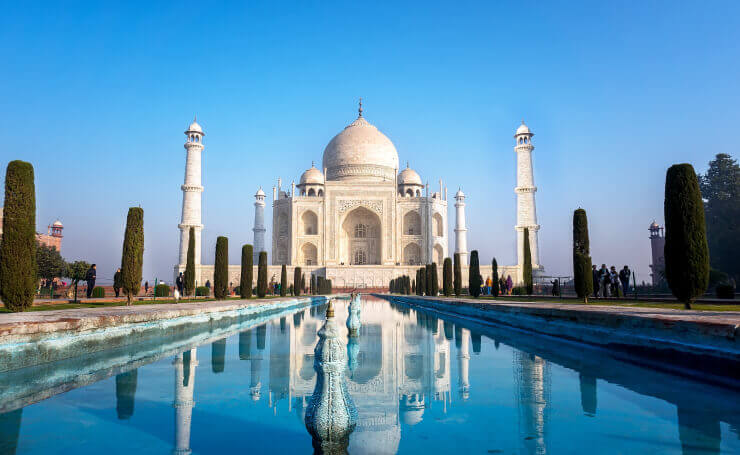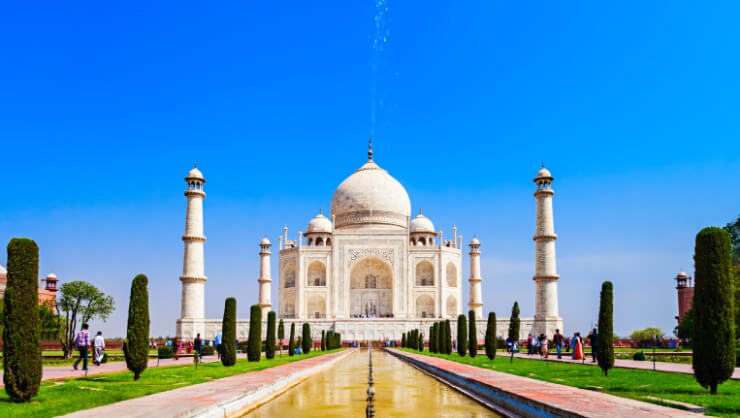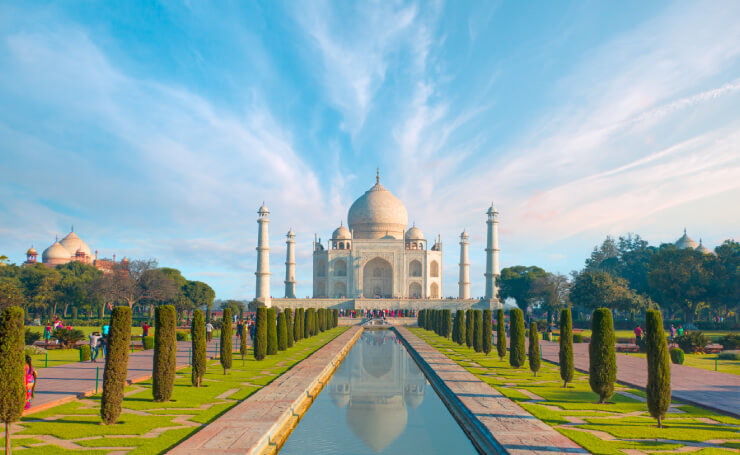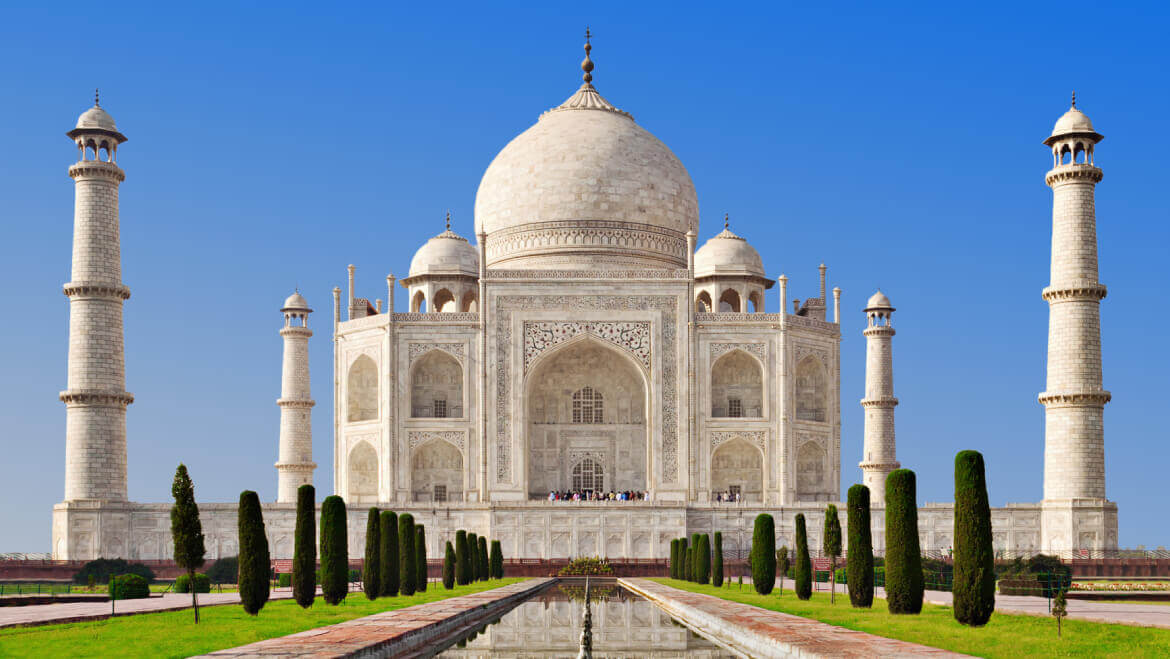We all have learned about Taj Mahal and things associated with it like when, who and for whom it was built, in our school life. Being one of the recognizable monuments in the world, it holds one of the most powerful and famous testimonies of love. But did you know there are still some facts about Taj Mahal that are unheard or lesser discussed?
The history of the Taj Mahal is indeed much more fascinating than what we all have been hearing and reading for years. I just couldn’t stop myself from sharing the most interesting and unknown facts that I have come across a few days ago with you. Trust me, learning about these lesser known yet interesting facts will give you plenty of reasons to plan your trip to Taj Mahal right away! So, without making you wait, let’s get started.

- It was a time period of 1632-1653 when Taj Mahal was built. Shah Jahan spent nearly 32 million rupees on the construction of what we now recognize as the epitome of love. Wondering what would be the value of money at present? Well, today the amount would be close to $1 Billion.
- About 28 types of precious and semi-precious stones were used for adorning the Taj and they were sourced from Tibet, China, Sri Lanka and some parts of India.
- Materials from all over India and Asia were used in the construction of Taj Mahal. It is said that over 1,000 elephants were used for transporting the construction material.
- If observed carefully, the four pillars or minarets are tilted outwards rather than standing straight. The reason why it was constructed in such a way was to protect the main tomb (gumbad) from being damaged with the falling of minarets on it in case of any natural calamity like an earthquake.
- The story of arms of artisans being cut-off to make sure that no such monument was ever built again is a hoax as the same man- Ustad Ahmad Lahauri (a Persian from Iran) who was the supervisor of the architect team, laid the foundation of Red Fort too.
- The foundation of Taj Mahal would have collapsed if it wasn’t on the Yamuna Bank. Yes, Taj’s foundation is made of timber which is not supposed to be long-lasting. So you can picturise well that the wood must have weaken over the period of time but it is because of the Yamuna River that the wood is kept strong and moist till date.

Some Interesting Facts You Didn’t Know about Taj Mahal
We all have learned about Taj Mahal and things associated with it like when, who and for whom it was built, in our school life. Being one of the recognizable monuments in the world, it holds one of the most powerful and famous testimonies of love. But did you know there are still some facts about Taj Mahal that are unheard or lesser discussed?
The history of the Taj Mahal is indeed much more fascinating than what we all have been hearing and reading for years. I just couldn’t stop myself from sharing the most interesting and unknown facts that I have come across a few days ago with you. Trust me, learning about these lesser known yet interesting facts will give you plenty of reasons to plan your trip to Taj Mahal right away! So, without making you wait, let’s get started.
Check out: Taj Mahal Agra Tourism Packages

- It was a time period of 1632-1653 when Taj Mahal was built. Shah Jahan spent nearly 32 million rupees on the construction of what we now recognize as the epitome of love. Wondering what would be the value of money at present? Well, today the amount would be close to $1 Billion.
- About 28 types of precious and semi-precious stones were used for adorning the Taj and they were sourced from Tibet, China, Sri Lanka and some parts of India.
- Materials from all over India and Asia were used in the construction of Taj Mahal. It is said that over 1,000 elephants were used for transporting the construction material.
- If observed carefully, the four pillars or minarets are tilted outwards rather than standing straight. The reason why it was constructed in such a way was to protect the main tomb (gumbad) from being damaged with the falling of minarets on it in case of any natural calamity like an earthquake.
- The story of arms of artisans being cut-off to make sure that no such monument was ever built again is a hoax as the same man- Ustad Ahmad Lahauri (a Persian from Iran) who was the supervisor of the architect team, laid the foundation of Red Fort too.
- The foundation of Taj Mahal would have collapsed if it wasn’t on the Yamuna Bank. Yes, Taj’s foundation is made of timber which is not supposed to be long-lasting. So you can picturise well that the wood must have weaken over the period of time but it is because of the Yamuna River that the wood is kept strong and moist till date.
Also Read: Top Places to Visit in India

- The architecture of the Taj Mahal truly expands and depicts the early Mughal designs which is a combination of Indian, Persian and Islamic design tradition.
- The calligraphy done over the walls of Taj Mahal are mostly taken from the holy book- Quran Sharif. Apart from the walls of Taj Mahal, the verses are inscribed on the Tomb of Queen Mumtaz Mahal and Emperor Shah Jahan.
- The marble stones used in the construction were bought from different regions and countries. Out of which the translucent white marble was bought from Makrana, a well-known place for marbles in Rajasthan; Jade & Crystal was imported from China, the Jasper from Punjab, Lapis Lazuli from Afghanistan, Carnelia from Arabia and Turquoise from Tibet.
- The Taj Mahal is taller than Qutub Minar (with a difference of five feet).
- Early accounts of the Taj Mahal’s original garden includes abundant daffodils, roses and fruit trees. It was then by the end of the 19th Century the British empire took the control over three fifth of India and they changed the landscaping according to their liking which resembled the lawns of London.
- Did you know Agra was not supposed to be the actual site for Taj Mahal? Yes, you read it right. Earlier, Taj Mahal was to be built in Burhanpur (Madhya Pradesh) where Mumtaz died during the childbirth. But unfortunately, Burhanpur couldn’t supply enough white marble and so the final decision was taken to build the Taj Mahal in Agra which has now become a popular domestic tourist attraction in Agra.
- Lord Curzon’s name is inscribed on a lamp inside the Taj Mahal. The beautiful lamp weighing around 60 kgs is made of copper and is placed under one of the royal gates where the visitors get the first glimpse of the Taj.
- The tomb contains 99 different names of Allah as calligraphic inscriptions.
- Shah Jahan’s other wives and favourite servants are buried in the mausoleums (outside the Taj Mahal but in the same complex).
- As per the Islamic tradition, graves aren’t supposed to be decorated. Perhaps this the reason why Shah Jahan and his wife Mumtaz were buried in a plain crypt beneath the inner chamber of Taj Mahal.
- Taj Mahal which is one of the most visited and beautiful monuments in India, has over 4-8 million visitors annually. Sometimes there are over 40-50 thousand visitors on one single day to capture the iconic sight of this magnificent building.
- The Taj changes its colour depending on the amount of light and time. In the sense, the Taj would appear to be pinkish in the morning, milky white in the evening and golden in the moonlight. If you have ever visited the Taj Mahal, then you probably must have noticed it. If not then do notice the next time when you plan to go.
- The UNESCO World Heritage classified the Taj as one of the ‘Seven Wonders of the World’ in the year 2007, with over 100 million votes.
- The Taj Mahal is closed on Fridays for prayers since it has an active working mosque in its premises. So, do not plan your trip to Taj Mahal on fridays.
Also Read: Top 20 Heritage Tourist Attractions Must Visit in India

- A well-known fact is, it took 22 long years to build the Taj Mahal (from the year 1632-53). Although work did not complete completely as small refinements continued even after that.
- During the Sepoy Rebellion (Mutiny) of 1857, it is believed that some British soldiers, laid their hands on the precious and semi-precious stones from the walls of the tomb.
- Over 20,000 labourers were employed to contribute in the massive project of building this symbol of love.
- Over the period of time, the white marble of Taj seemed to be turning yellow due to the air pollution. So, only electric vehicles are allowed near the surrounding area in order to conserve the cultural heritage of India. Tourists/visitors have to take a walk from the parking area to the Taj Mahal. Also, it is forbidden for an aircraft to fly over the Taj Mahal (so it’s a no-fly zone).
- The Taj was concealed by the ASI (Archeological Survey of India) during World War-II. It was covered with a huge scaffold which made it to appear like stockpile of bamboo. Later once again it took place during the Indo-Pak War in 1971.
- You can see the Taj Mahal from the Jasmine Tower of Agra Fort (also known as Musamman Burj- where Shah Jahan was imprisoned by his son, Aurangzeb).
- So these were some of the facts that make the Taj Mahal one of the magnificent monuments in India.
- Want to visit Taj Soon? Here’s some information that can be useful in planning a trip

 +91-8744012050
+91-8744012050 Plan Your Trip
Plan Your Trip
No comments:
Post a Comment